iPhone 16 Review
The iPhone 16 and iPhone 16 Plus get all sorts of new features that bring them more in line with the pro models.
Pros
- Camera Control is kinda cool!
- A18 chip brings improved performance
- You get an Action Button
- Better battery life
- Faster wired and wireless charging
Cons
- Camera Control isn’t perfect
- Still no ProMotion
It has a new button now. It’s a good button. There, that’s the review…?
The iPhone 16 seems primed to fail. After months of hyping the release of Apple Intelligence, we’ve been waiting with bated breath for a new generation of devices purpose-built to take advantage of AI. But missing at launch, unfortunately, is the very AI we’ve been told is the biggest update to the iPhone since the original. The result? The idea that the iPhone 16 is a minor, iterative update over the iPhone 15.
Don’t miss BGR’s iPhone 16 Pro review
And, in the grand scheme of things, that’s somewhat true. But I’m not sure that criticism is entirely fair, at least on these base models. Even without Apple Intelligence, the iPhone 16 would represent the biggest update to the base iPhones in years. New processor? Yep, and it’s the biggest improvement for a long time. Better camera? It’s here, and it can now leverage the ultrawide camera for macro photography. There’s even a new button that seems designed for the nerds that write these reviews, plus a second new programmable button (even if that second one was inherited from the Pro models from last year).
Is the entire iPhone 16 lineup hamstrung by the lack of the biggest software changes in years? Of course. But the iPhone 16 and iPhone 16 Plus still represent meaningful improvements in more ways than one, and a much bigger upgrade over the iPhone 15, than the iPhone 16 Pro is over the iPhone 15 Pro. No, you shouldn’t upgrade if you have the iPhone 15, but while the iPhone 16 is formulaic, the formula is working, and it’s still producing amongst the best in the business.
iPhone 16 specs
| iPhone 16 | iPhone 16 Plus | |
| Dimensions | 147.6 x 71.6 x 7.8 mm | 160.9 x 77.8 x 7.8 mm |
| IP rating | IP68 | IP68 |
| Display resolution | 1176 x 2556 pixels | 1290 x 2796 pixels |
| Display size | 6.1 inches | 6.7 inches |
| Display type | OLED | OLED |
| Display refresh rate | 60Hz | 60Hz |
| Display brightness | 2000 nits (peak) | 2000 nits (peak) |
| Chipset | Apple A18 | Apple A18 |
| Memory | 8GB | 8GB |
| Storage | 128GB, 256GB, 512GB | 128GB, 256GB, 512GB |
| Rear cameras | Wide: 48MP, f/1.6, sensor-shift OISUltrawide: 12MP, f/2.2, 120-degrees | Wide: 48MP, f/1.6, sensor-shift OISUltrawide: 12MP, f/2.2, 120-degrees |
| Video | 4K at 60fps, 1080p at 240fps | 4K at 60fps, 1080p at 240fps |
| Front camera | 12MP, f/1.9 | 12MP, f/1.9 |
| Ports | USB-C 2.0 | USB-C 2.0 |
| Battery size | 3,561mAh | 4,674mAh |
| Charging | 45W wired, 25W MagSafe, 15W Qi2 Wireless | 45W wired, 25W MagSafe, 15W Qi2 Wireless |
| Connectivity | Bluetooth 5.3, Wi-Fi 7, 5G | Bluetooth 5.3, Wi-Fi 7, 5G |
| Colors | Black, White, Pink, Teal, Ultramarine | Black, White, Pink, Teal, Ultramarine |
| Price | $829.99 | $929.99 |
A refined design with two new buttons
For the most part, the iPhone 16 looks just like the iPhone 15 from last year, but that’s a good thing. The iPhone 15 series was amongst the best-built and best-designed iPhone releases in history. I loved the matte back, and the curved corners indeed helped make it feel more comfortable. All of those things are still here for the iPhone 16.
Of course, there are some differences between the iPhone 16 and iPhone 16 Plus. For starters, there are some new colors, the coolest of which is the Teal color that my iPhone 16 Plus is in. I’ve always been a bit boring when it comes to tech colors, but recently, I’ve been changing my tune, and I absolutely love the look of Teal.
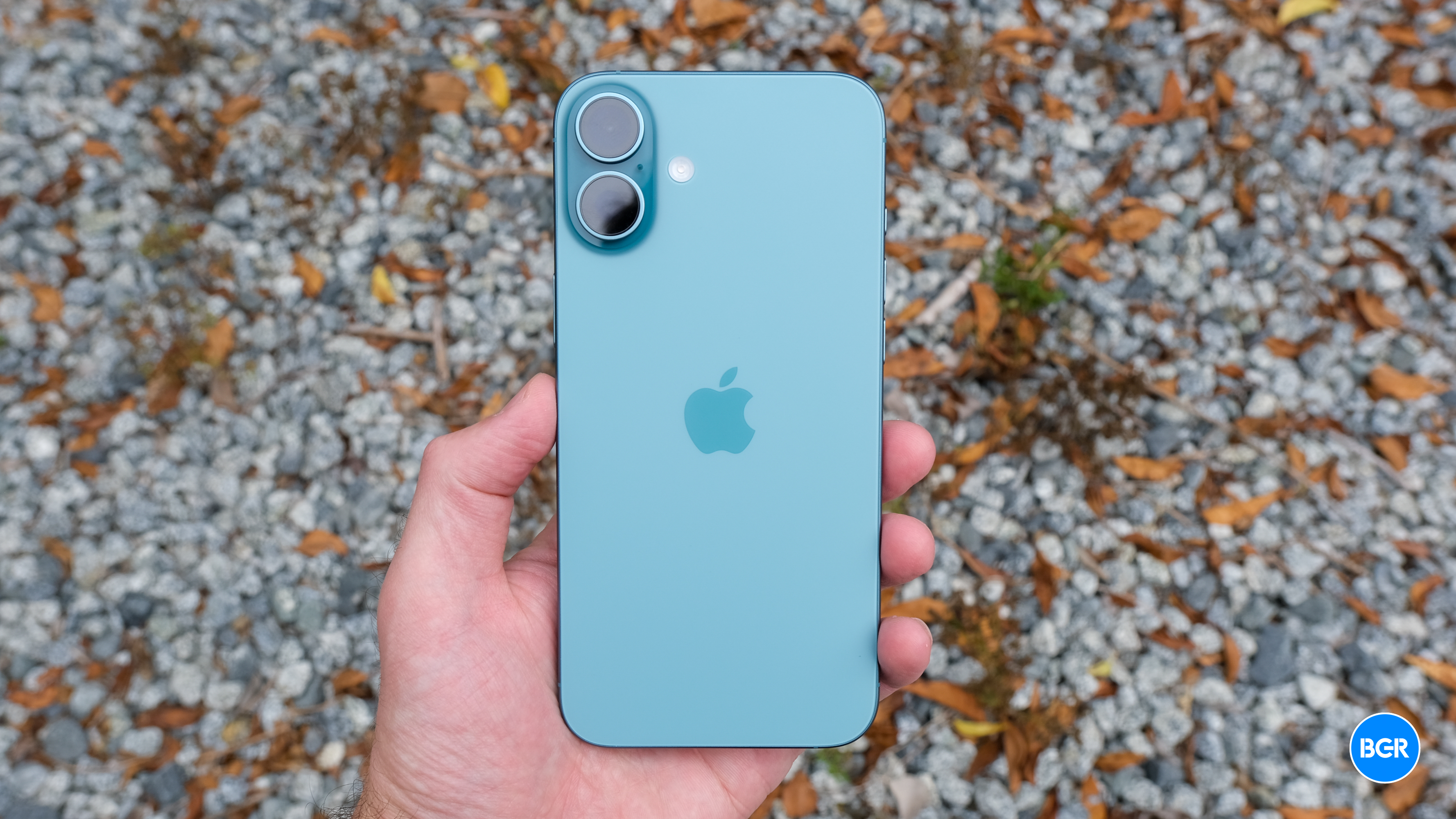
On top of the new colors, the camera alignment has changed a little. Now the cameras are aligned vertically instead of diagonally. I don’t really care about the change in terms of look, but the update, according to Apple, has less to do with look anyway. Seemingly the vertically aligned cameras allow the phone to capture better Spatial Video.
On the left-hand side, the base iPhones get an update from the iPhone 15 Pro series from last year: the Action Button. Frankly, the Action Button should have been included on the base iPhone 15 models last year, but I’m glad it’s here on the iPhone 16. I’ve actually found it pretty useful to trigger Siri Shortcuts for things like manual health logging. I’ve seen other users program it to trigger the flashlight, camera, and all sorts of other tasks. Of course, you won’t need to use it for the camera now, given the dedicated camera button, but regardless, the action button is a cool addition and one that should prove helpful for many users.
Other aspects of the design besides the camera control are to be expected. There’s the USB-C port on the bottom, a power button on the right side, and volume buttons under the Action Button on the left side. Also on the right edge, of course, is the Camera Control.
Camera Control button
Let’s get this out of the way. I love the idea of the camera control. It’s one of the nerdiest new features on an iPhone in many years, and I’m here for it. And in classic Apple fashion, it’s a feature that doesn’t have to be all that nerdy. Most basic users will use it as a button, and that’s really it. Open the camera with one press and take a photo with another press.
But if you’re anything like me, you’ll use it for much more than that. Apple avoids simply calling it a button and I do understand that. After all, it is actually much more than a button. To be clear, it is a physical button. It’ll still depress and click even when the phone is off. It’s not a fake button that only feels like one with the implementation of haptic feedback. But on top of being a button, it’s also a touch surface, and it’s pressure-sensitive, so you can control different things with a soft press as opposed to an actual click.
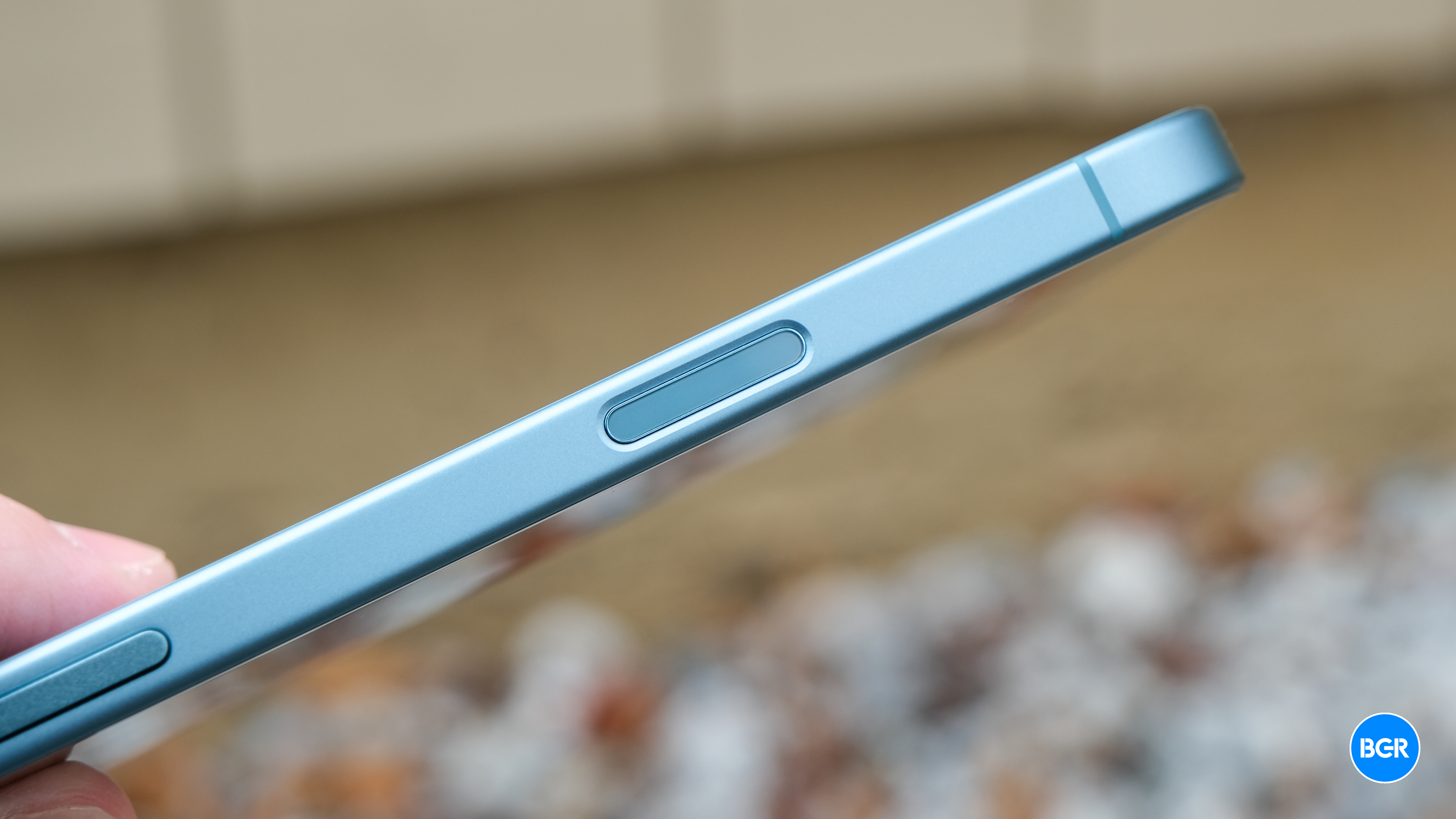
The positioning of the camera control can feel slightly awkward at times, but I’m not sure how Apple could have positioned it better in a way that makes it useful for both vertical and horizontal shots. When shooting horizontal shots, it’s too far up along the body of the phone to be reachable with a finger curved around the corner of the device, so you have to kind of hold the phone with your finger and thumb to make use of it. And it’s a little low to feel natural when using it with your thumb when shooting vertically aligned photos. The current positioning kind of seems like the most natural compromise, but you’ll have to get used to how it feels in both orientations.
You’ll also have to get used to how it works in general. The button won’t open the camera when the screen is off, but you can press it to turn the screen on and then press it again to open the camera app — though you can get used to a quick double-press to open the camera and if you prefer using a double-press, in general, you can switch to that in settings. I get why, as you don’t want the button to accidentally open up the camera when the phone’s in your pocket. But perhaps allowing users to open the camera when the screen is off with a long press would have been useful. Once in the camera app, a simple press takes a photo.

But the control is also much more powerful than that. Apply some pressure and you’ll access zoom settings, and you can then zoom in or out by swiping up or down the Control. With a double light press, you can access other controls like exposure, depth, and the revamped Photographic Styles feature.
The biggest issue with the Camera Control has little to do with how highly functional it is and more to do with the action of pressing a button on such a lightweight device. You have to be really careful and steady when pressing the Camera Control if you don’t want to accidentally move or shake the whole phone when you press it — something that could either cause your photos to look blurry, or your framing to be slightly off. That’s especially true at higher levels of zoom. I did get used to it, though — and found myself more firmly holding the phone to ensure that I kept it steady.
Generally speaking, I love the new Camera Control. I think it’s nerdy in the best way possible, and once you get used to its positioning and how it works, it can be genuinely useful. For many, it’ll also free up the action button for another function.
The same good-looking screen, but still no ProMotion
Not updated for the iPhone 16 and iPhone 16 Plus this year is the display. That’s right, another year without ProMotion on the standard iPhone, despite the fact that plenty of mid-range Android phones these days have LTPO OLED displays.
That’s a bit of a bummer because ProMotion is the biggest thing keeping the base iPhone’s display from being near perfect. The screen on the Pro-level iPhones looks fantastic, plus ProMotion enables features like the always-on display. That’s something you still can’t get on a non-Pro iPhone.
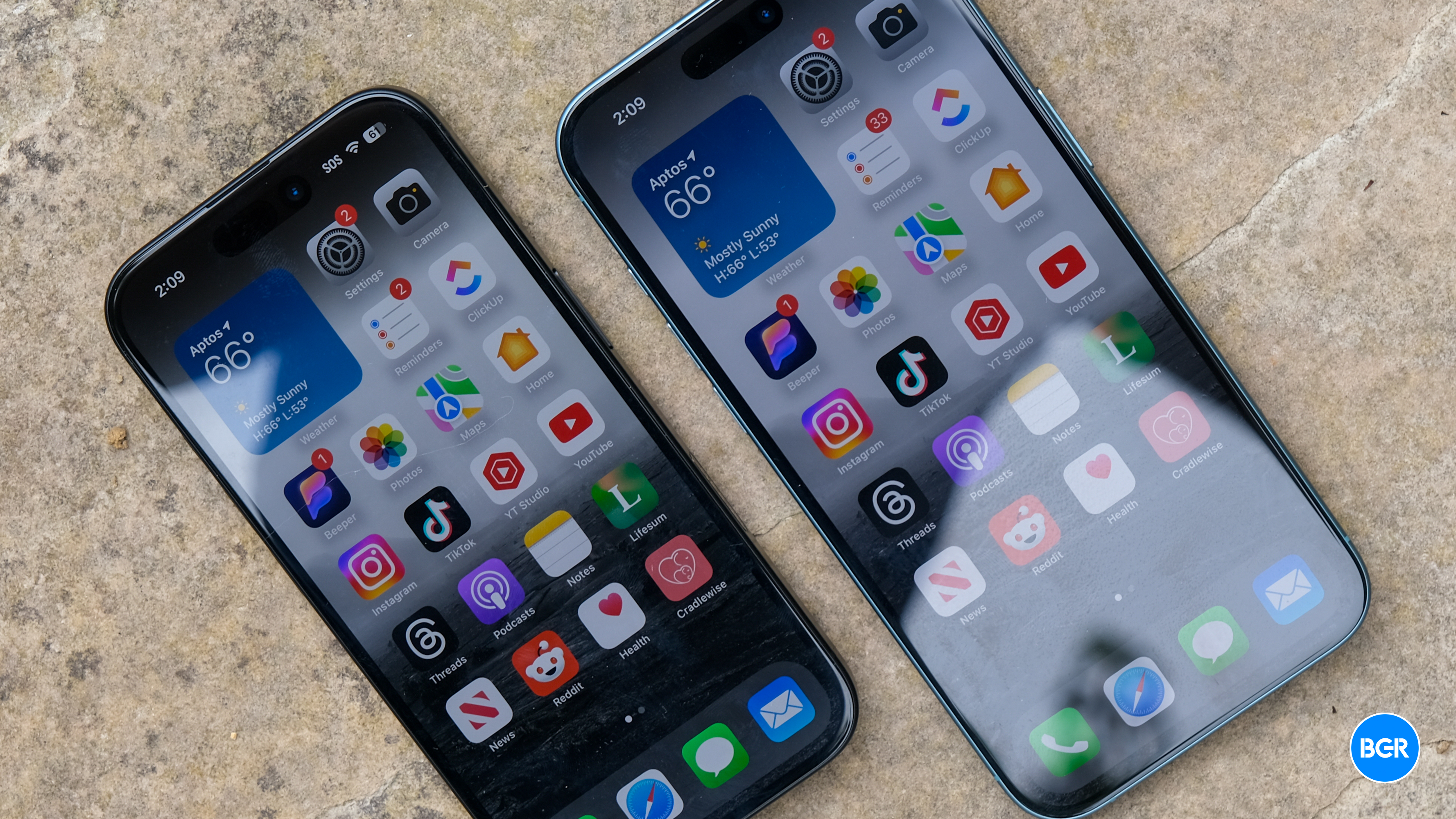
While it’s not an LTPO OLED display, it is still an OLED display in general. So it still delivers deep inky black levels and high contrast. The screen on the iPhone 16 and iPhone 16 Plus ranges up to 2,000 nits in peak brightness. I found it easily bright enough to make images and text more than readable outdoors, even in direct sunlight. And the screen delivers vibrant colors and a high enough resolution for crisp text.
Maybe Apple has a branding issue. Maybe it doesn’t want to add “ProMotion” to a phone that isn’t a “Pro” phone. Regardless, I hope it shows up in the base iPhone 17. In the meantime, while you won’t get an always-on display, rest assured that the display on the iPhone 16 and iPhone 16 Plus looks stunning.
Performance improvements built for AI
The past few base-model iPhones haven’t gotten a totally new chip, instead inheriting the chip the Pro-model phones had the year before. Not so for the iPhone 16. The iPhone 16 and iPhone 16 Plus skip any form of A17 chip, instead offering the new A18 chip. To be clear, Apple does still differentiate the chipset in the base and Pro phones, and the iPhone 16 Pro devices get an “A18 Pro” chip.

So what’s the difference between the two? Basically, both chips are built on a second-generation 3-nanometer process, but the A16 has a 5-core GPU instead of a 6-core GPU, as found on the A16 Pro. The base iPhones, however, do still have Apple’s new thermal design that the company says improves overall cooling, resulting in better performance. And, the base A18 has hardware-accelerated ray-tracing, a feature previously only found on the A17 Pro.
So how do the iPhone 16 and iPhone 16 Plus perform? Well, very well, but that’s nothing new. For basic usage, you’ll have no problems with the performance. The device can breeze through multitasking and loads even heavier apps and games quickly. Many of the performance gains are here to facilitate AI — but given the fact that Apple Intelligence isn’t out yet, we didn’t test that.
Benchmark results showed a helpful improvement in performance overall. Here are the results we achieved with the base iPhone 16. These results were very similar to the iPhone 16 Plus.
- GeekBench 6: 3,282 (single-core), 7,911 (multi-core)
- 3DMark Wild Life Extreme: 4,060
The results show a pretty serious improvement for the iPhone 16 over the iPhone 15, especially when it comes to multi-core performance. They also show a device that can outperform Snapdragon 8 Gen 3-equipped devices in CPU performance, but not necessarily when it comes to GPU performance.
Better battery meets faster charging
Apple is finally improving the iPhone’s battery, and indeed, the battery life on both the iPhone 16 and iPhone 16 Plus is better than the previous-generation devices. That’s very good news — the iPhone has never been particularly strong in terms of battery life, and any improvement is a welcome one.
The entire iPhone 16 series benefits from faster charging tech too, which is another very welcome change. The iPhone 16 and iPhone 16 Plus can now charge at up to 45W with a wired connection (though in practice, I found that it’s closer to 39W). That’s a big improvement over the up-to-20W charging speeds on offer by the iPhone 15.
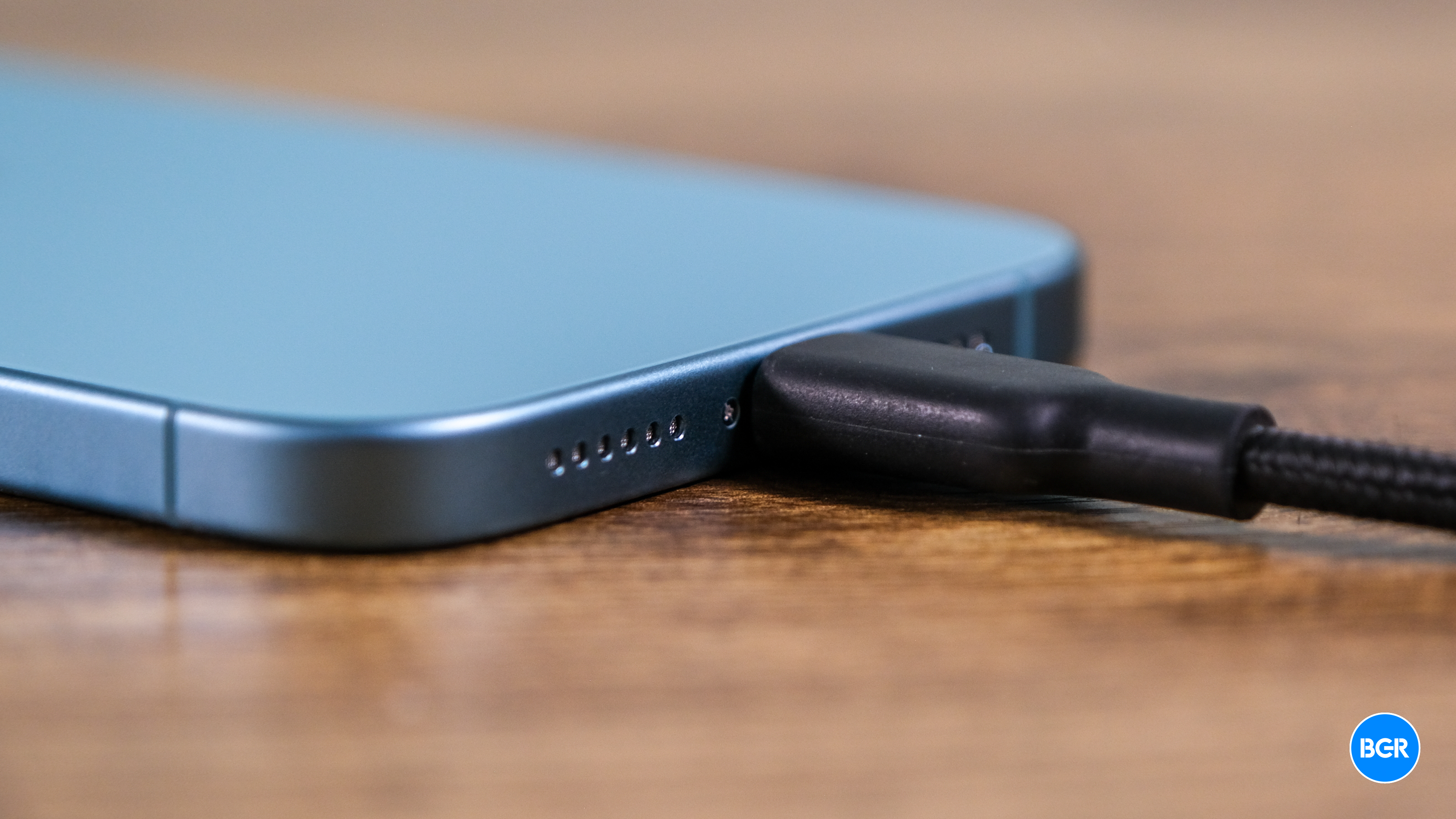
Apple is safeguarding the MagSafe ecosystem of chargers — in a good way. For a while, it seemed as though MagSafe and Qi2 would essentially converge, bringing faster wireless charging and a whole new slew of magnetic accessories. For the iPhone 16 series, Apple has raised MagSafe charging speeds to an impressive 25W — leaving the 15W Qi2 speeds in the dust. In other words, while Qi2 is still rolling out, iPhone users will benefit from using actually-approved “MagSafe” chargers — though at the time of this writing, really only Apple’s official MagSafe charger supported the faster charging speeds. Double-check the charging speed of a third-party MagSafe charger before you buy if you want the full 25W.
Regardless, I’m really glad Apple is taking charging speeds a little more seriously. For years, the iPhone series has lagged in wired charging speeds, and now, you’ll get decently quick charging speeds when using the right wired and wireless chargers. You won’t get the 100W+ speeds that you can find on some Android phones, but it’s a big step in the right direction.
Pick your own camera adventure
Both the iPhone 16 and iPhone 16 Plus have essentially the same camera specs as on the iPhone 15. The devices offer a 48-megapixel primary camera with an f/1.6 aperture and sensor-shift optical image stabilization, along with a 12-megapixel ultrawide camera with a f/2.2 aperture. New for the iPhone 16 is the fact that the ultrawide camera can be used in macro mode, like the Pro-series iPhones have been able to do for a while now.
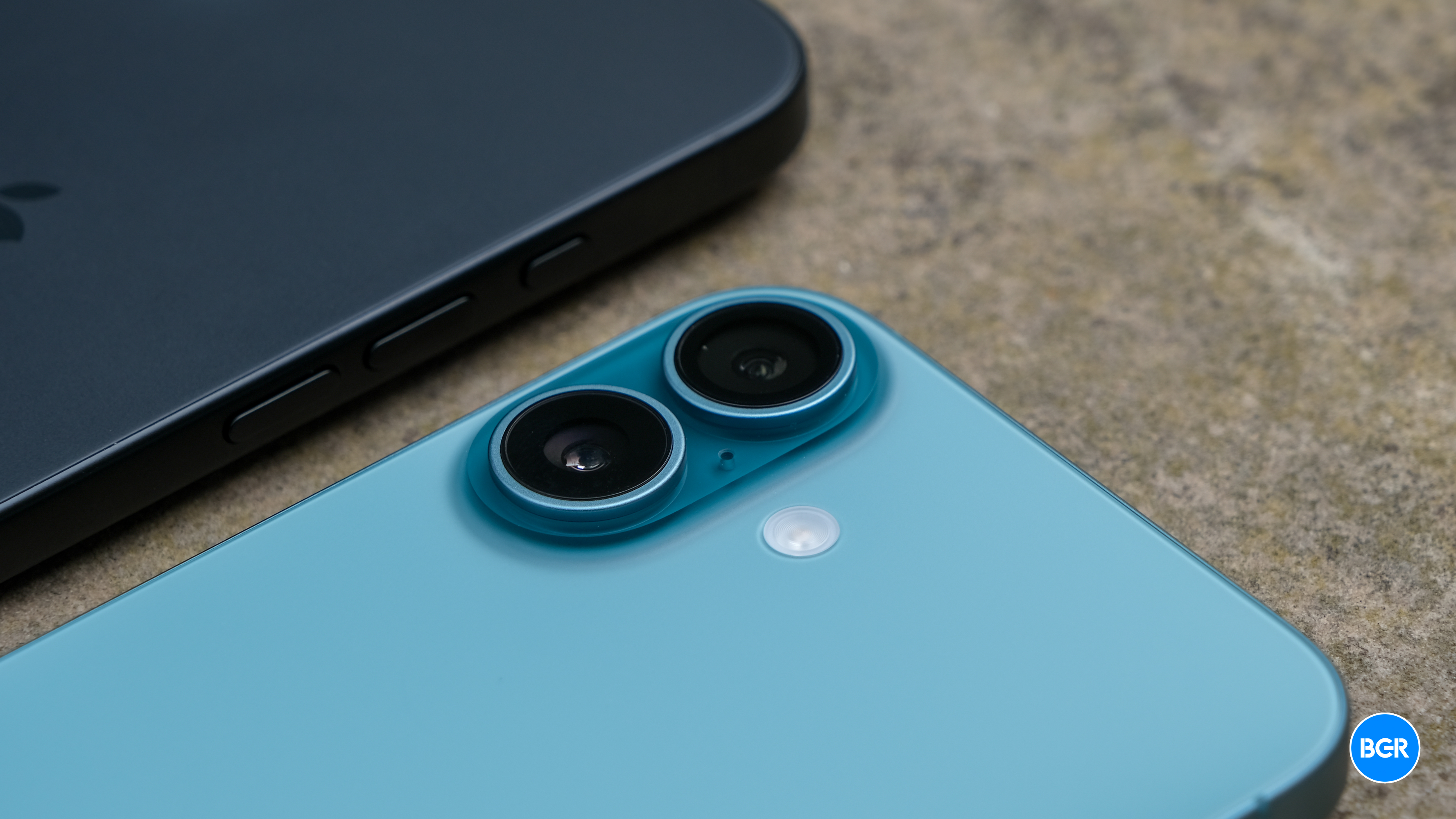
Images captured on the iPhone 16 and iPhone 16 Plus look great. They offer a good amount of detail, and for the most part, macro mode photos look quite good. As has been the case for a while now, the device is able to capture solid images in low-light conditions. And, images captured at 2x zoom look just as detailed as those captured at 1x zoom. Between the new-for-the-base-iPhone macro mode, ultrawide mode, normal photos, and 2x lossless photos, Apple argues that the device has the equivalent of four cameras. That’s perhaps a little over the top, but in all of these modes, photos look generally good.
Photographic Styles
Also new is the completely revamped Photographic Styles system, which can now be quickly and easily toggled straight from the camera app during capture. That means you can apply different Photographic Styles on the fly, depending on the vibe you’re going for. And, on top of that, you can create your own Photographic Style using a little D-Pad on the display. It’s pretty neat. If you find one you like a lot, you can set it as the default by heading to the Settings app. When you tweak Styles from the camera app, the app will reset to the default when you exit the app.
So what’s the difference between doing that and just…using a filter after capture? Well, put simply, they’re applied in the image capture instead of over the top of an existing photo. Filters applied after a photo is taken inherit everything from the original photo — including any lack of detail in the shadows, poor contrast, and colors from the camera. Photographic Styles are applied towards the end of the image pipeline during capture, and Apple saves everything before that as data in the image file — allowing you to apply non-destructive “lossless” changes.
Overall, it works pretty well, especially for those who aren’t fans of Apple’s general approach to camera tuning over the past few years. Photographic Styles is Apple’s way of taking itself out of the equation a little — it’ll still offer its own camera tuning in the standard style. But if you don’t like it, you don’t have to use it — just set up your own Photographic Style.
While it’s very neat that you can tweak Photographic Styles straight from the camera app, as well as after capture, the way you’ll do so is a little finicky. I’m not sure most people will take the time to do so all that often. Most users will probably flick through the presets, find one they like, and apply it to all of their photos — just like they did before. But, it is nice that there are more options for those who do want more control.
Conclusions
With or without Apple Intelligence, the base iPhones get a pretty big upgrade this year. They perform excellently well, get the programmable Action Button they should have had last year, and get a fun new Camera Control that, while imperfect, is kind of fun.
All together, these updates are substantial. They make the entire iPhone lineup feel a little more cohesive — thanks to the fact that they all have the same buttons, and the chipsets are at least named in a way that implies they’re from the same family. This year, the base iPhones aren’t an afterthought.
The competition
Most buyers aren’t switching between iOS and Android — they’re deciding whether they should upgrade from their current iPhone or not. The answer? Well, it kind of depends. If you upgrade from the iPhone 15 or iPhone 15 Plus, you’ll get the Action Button and Camera Control, along with lossless 2x zoom on the main camera — but for most, those probably don’t warrant an upgrade.
But it very well might be worth an upgrade from the iPhone 14 or iPhone 14 Plus. If you upgrade from those devices, you’ll get a device that’s better in almost every way — from design tweaks like the smaller Dynamic Island, to a better camera and better display, to USB-C on the bottom. If you’re willing and able to upgrade from an iPhone 14 or older model, I recommend doing so. If you already have an iPhone 15 model, it’s a much more difficult decision, as I already mentioned.
Should I buy the iPhone 16?
Yes. It’s an excellent phone.


















